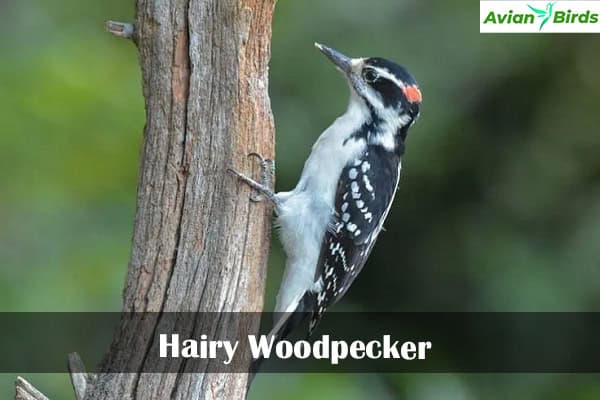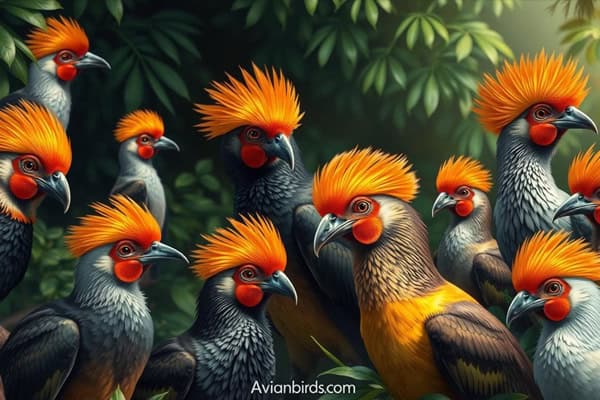Woodpeckers in Indiana (7 Species you can spot)
I’ve researched the fascinating woodpeckers of Indiana, and their behaviors never cease to amaze me. These unique birds are not just skilled drummers; they play vital roles in their ecosystems. Each species has its own story, from the striking red-headed woodpecker to the elusive pileated woodpecker. I’ve discovered their nesting habits, feeding preferences, and the challenges they face. Join me as we dive deeper into their world. You won’t want to miss this exploration!
Introduction to Woodpeckers in Indiana
Woodpeckers are fascinating visitors in Indiana’s forests and parks. There are seven distinct types of woodpeckers in Indiana. You can enjoy their captivating behaviors while exploring the state’s rich avian diversity.
These birds are known for their ability to drill into trees. They use their strong beaks to hunt for food and establish nesting sites.
Each woodpecker species has unique characteristics. The Pileated Woodpecker has striking plumage. The Downy Woodpecker is smaller with distinctive markings.
As you birdwatch in Indiana, you may see these charismatic birds. They are part of the abundant wildlife.
Urban parks and natural habitats are great places to spot woodpeckers. Indiana is a key crossing point for many migratory birds. This makes every season exciting for bird lovers.
Habitat restoration and conservation efforts help these birds thrive. They create a welcoming environment for these gorgeous birds.
Learning the Woodpecker Behavior and Habitat
Woodpeckers have special behaviors to help them survive and grow. They dig holes in trees for food and homes. By tapping on bark, they find insects to eat.
This skill lets woodpeckers live in many places. It shows how clever they are.
Woodpeckers like to live in places with lots of trees. Indiana has many types of trees, which is good for them. They like to nest in old trees because they are safe and have food nearby.
Woodpeckers help trees stay healthy. They are important for Indiana’s bird life. Keeping them safe helps the whole ecosystem thrive.
Common Traits of Woodpeckers
Woodpeckers have many interesting traits and adaptations. Their strong, chisel-like beaks are perfect for drilling into trees. This lets them find insects hidden in bark or wood.
These birds have zygodactyl feet, with two toes forward and two backward. This helps them grip tree trunks better. Their long tongues also help them get insects from deep crevices.
Woodpeckers look colorful, with bright feathers and patterns. For example, the Pileated Woodpecker has bold black feathers and a red crest. These colors help them attract mates and show off their health.
Woodpeckers drum on trees to defend their territory and attract mates. They also make holes in wood to find food. These actions help keep forests healthy by controlling insects and supporting trees.
| Trait | Description |
|---|---|
| Beak | Strong and chisel-like for drilling |
| Feet | Zygodactyl arrangement for gripping |
| Tongue | Specialized and extendable for extracting insects |
| Plumage | Vibrant colors and patterns for identification |
| Drumming | Behavior used for territory defense and mating |
| Nesting | Both parents feed nestlings that beg loudly |
1. Pileated Woodpecker
The Pileated Woodpecker is a fascinating bird in Indiana. It’s big and has a striking look. It’s as long as a crow and has cool Pileated Woodpecker features like black and white colors and a red crest.

This bird loves mature forests. It digs special holes in trees. This shows how important it is to the forest.
Identification and Key Features
Pileated Woodpeckers are big, with a wingspan of 66 to 75 cm. They weigh 225 to 400 grams. They have big size, a red crest, and black and white colors.
Plus, They make rectangular holes in trees. These birds stay in their territories all year. They live in big trees, helping other birds like swifts and owls.
Moreover, They are the biggest woodpecker in North America. They are a symbol of the region.
Diet and Feeding Habits
The Pileated Woodpecker diet includes insects like carpenter ants. They also eat fruits, nuts, and berries. Their strong beaks help them make big nests in dead trees.
They lay three to five eggs for 12 to 16 days. The eggs hatch in about a month. The Pileated Woodpecker population is growing, showing its importance in the forest.
2. Hairy Woodpecker
The Hairy Woodpecker is a bird found in many places, especially in Indiana. It is known for its bright colors and special features. This section will talk about how to tell it apart and its role in nature.

Physical Description
Hairy Woodpeckers are about 9.25 inches long and have a wingspan of 17.5 inches. They have black and white feathers. Males have a red spot on their heads, while females do not.
They weigh between 1.41 to 3.35 ounces. This makes them stand out among other woodpeckers. They mostly eat insects like hairy caterpillars and ants.
Here’s a comparison of some physical characteristics with other woodpeckers found in Indiana:
| Species | Length (inches) | Weight (ounces) | Wingspan (inches) |
|---|---|---|---|
| Hairy Woodpecker | 9.25 | 1.41 – 3.35 | 17.5 |
| Downy Woodpecker | 6.75 | 0.74 | 11.8 |
| Pileated Woodpecker | 15.8 – 19.3 | 8.8 – 12.3 | 28 |
Learning about the Hairy Woodpecker in Indiana is interesting. It has special traits that make it unique. It helps keep trees healthy by controlling insects. Birdwatchers and nature lovers find it fascinating.
3. Red-Headed Woodpecker
The Red-Headed Woodpecker is a bright bird with a red cap and black and white body. It lives in many types of trees. This woodpecker has special traits that help it live well in certain places.

Unique Characteristics
This bird has a round head, short stiff tail, and strong bill. Adults have bright red heads, white bellies, and black backs with big white patches on their wings. Young birds have gray-brown heads with black spots on their wings, which turn into adult colors.
They live in pine savannahs and open forests. You can find them in pine plantations, near farms, and wetlands. Also, They can cling to trees, catch insects in mid-air, and even hunt on the ground. They mostly eat seeds and fruits.
They store food in tree holes and fly around while looking for food. Their loud, scratchy calls are easy to recognize. In Indiana, you can see them among seven other species.
But their numbers are going down. We need to protect their homes and food to help them. Keeping trees and managing forests helps these colorful birds stay in our woods.
4. Red-bellied woodpecker
The Red-Bellied Woodpecker is a bird you often see in Indiana. They live in places like forests, swamps, and parks. Their bright red nape makes them fun to watch.

They look for food on tree trunks and branches. In winter, they even visit towns to use bird feeders.
Habitat Preferences
In Indiana, Red-Bellied Woodpeckers like forests with live and dead trees. They can live in many places. A nest was found in a tree branch at Meacham Grove Forest Preserve.
They dig holes in dead trees for nests. Both parents help with the nest and raising their young.
This bird makes a sound like “yooch yerch”. They call out quickly, especially in winter. Places like McDowell Grove and Eliza Howell Park show their drumming.
Red-Bellied Woodpeckers eat insects, fruits, and seeds. They love acorns in the fall. They’ve learned to live in many places over time.
5. Northern Flicker
The Northern Flicker is a standout among Indiana’s woodpeckers. It has a mix of brown and black with a light tan chest. The chest is covered in black spots. There are two main types: yellow-shafted and red-shafted. The yellow-shafted lives in the east, while the red-shafted is found in the west.

These birds are interesting because they spend a lot of time on the ground. They look for ants and beetles. Their flight is unique, with a special motion and a white rump.
They make a loud “wick wick wick wick wick” sound. They also have a call that sounds like “flick-a flick-a flick-a.” Despite being common, they face threats from habitat loss and urban growth. They help keep the ecosystem balanced by controlling insects.
| Characteristic | Yellow-Shafted Form | Red-Shafted Form |
|---|---|---|
| Coloration | Light tan face, gray crown, red crescent on the nape | Gray face, brown crown without a nape crescent |
| Mustache Stripe | Black stripe in males | Red stripe in males |
| Flight Feather Shaft Color | Lemon yellow | Rosy red |
| Breeding Range | Western Alaska to Atlantic and Gulf Coasts | Southeastern Alaska to Nicaragua |
The Northern Flicker is very adaptable and can live in many places, including cities. Learning about them helps us see why we need to protect their habitats. Watching them can make us appreciate wildlife more.
Woodpeckers of Indiana: Observing Their Habitats
Watching woodpeckers in Indiana is a special way to connect with nature. The area is home to over 418 bird species. This makes it perfect for birdwatching, with many spots to see these birds.
From state parks to wildlife refuges, there are many places to see woodpeckers. Each spot has its own unique features. This lets you see the special qualities of these birds.
Where to Spot Woodpeckers
Indiana has many great places to see woodpeckers. These spots have everything from tall trees to open woodlands. Even backyards can be home to these birds.
Look for signs like their calls and drumming sounds. These are clues that woodpeckers are around.
- State Parks: Places like Brown County State Park and Turkey Run State Park are full of woodpeckers.
- Wildlife Refuges: The Patoka River National Wildlife Refuge has the perfect woodland for watching woodpeckers.
- Residential Areas: Many neighborhoods in Indiana have trees that attract Downy Woodpeckers.
| Location Type | Common Woodpecker Species |
|---|---|
| State Parks | Pileated Woodpecker, Hairy Woodpecker |
| Wildlife Refuges | Red-headed Woodpecker, Red-bellied Woodpecker |
| Residential Areas | Downy Woodpecker, Northern Flicker |
Looking for woodpeckers in Indiana is a great way to enjoy nature. It also teaches you about their behavior and homes. Don’t forget your binoculars for the best view of these amazing birds!
Conservation and Importance of Woodpeckers
Woodpeckers are key to keeping Indiana’s forests healthy. They help control pests and improve tree health. They eat insects, like carpenter ants, which is good for trees and other animals.
Woodpeckers also help create homes for other animals. When they make nests in trees, they help many birds and animals. This shows why we need to protect their homes.
Efforts to save woodpeckers are important. They help trees and many other animals. Knowing about woodpeckers helps us keep our environment healthy.
| Woodpecker Species | Global Population | Diet Highlights | Life Span (Years) |
|---|---|---|---|
| Pileated Woodpecker | 2.6 million | Carpenter ants (up to 97% in some) | 6-10 |
| Hairy Woodpecker | Steady | Variety of insects | 5-10 |
| Red-Headed Woodpecker | Stable | Fruits, nuts, insects | 8-10 |
| Red-Bellied Woodpecker | Stable | Fruits, insects, nuts | 10-12 |
| Northern Flicker | Stable | Ants, beetles | 5-8 |
Read More🐦Related Articles:
| Woodpeckers in Arizona |
| Woodpeckers in Maryland |
| Yellowhammer: Alabama’s Vibrant State Bird |
| Budgerigar: The Perfect Pet Parakeet |
| Top Blue Parrot Species to Keep as Pets |
Conclusion
Woodpeckers in Indiana are very diverse. They include the Pileated Woodpecker, Hairy Woodpecker, and more. Each species has its own special traits and plays a key role in Indiana’s forests.
Knowing about woodpeckers shows how important they are for Indiana’s bird life. They face big challenges like losing their homes and dealing with climate change. We need to help protect their homes to keep Indiana’s wildlife rich and diverse.
Seeing woodpeckers in the wild is a great experience. It shows us how beautiful and varied Indiana’s nature is. Their presence reminds us of the importance of taking care of our planet and all its creatures.







